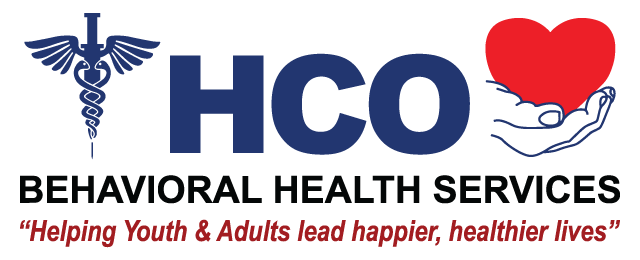To Raise Resilient Kids, Be a Resilient Parent
As parents, we want our children to be emotionally resilient — able to handle life’s ups and downs. But parents’ ability to foster resilience in our children hinges a great deal on our own emotional resilience.
“A parent’s resilience serves as a template for a child to see how to deal with challenges, how to understand their own emotions,” said Dr. Dan Siegel, author of “The Yes Brain,” which focuses on cultivating children’s resilience.
Yet for many parents, taking the temper tantrums and meltdowns in stride presents a challenge — especially if we have unrealistic expectations of what childhood is really all about.
“Part of it is this idea that we have that parenthood should be this amazing, blissful, perfect culmination of our hopes and dreams,” said Katherine Reynolds Lewis, author of the forthcoming book “The Good News About Bad Behavior.”
Ms. Lewis said that anger, tears and other outbursts are a natural part of any child’s development — what she calls “the messiness of childhood.”
But parents who are unable or unwilling to confront that messiness may view their child’s outbursts as a problem that urgently needs to be solved.
When that happens, Laura Markham, a clinical psychologist and editor of the site AhaParenting.com, said: “We ridicule kids, we blame them, we tell them it’s their own fault; we isolate them by sending them to their rooms.”
The nature of the parent’s response may vary, Dr. Markham said, but the message is the same — that anger, sadness or frustration are unacceptable.
This, Dr. Markham noted, is the opposite of resilience; instead, it’s a fragile rigidity that leaves both parent and child fearful that outsized emotions could shatter them.
In contrast to this fragility, parents who don’t flinch from the power of emotions like anger have a greater capacity to absorb challenging interactions with their children, said Dr. Siegel, who is executive director of the Mindsight Institute. And don’t worry if this kind of resilience doesn’t come naturally, he said — with practice, it gets easier.
Here are some tips for making those difficult interactions easier to absorb:
Take a Breath
To respond thoughtfully to our child’s outbursts, we have to first silence the alarm bells going off inside our head. Dr. Markham coaches parents to “hit the pause button” before taking any action, even in the face of a screaming child. In her research, Ms. Lewis learned that parents and children often synchronize their heart rates, breathing and other physiological functions, so calming ourselves down can have a measurable, physical effect on our child — not to mention on our own ability to face a situation calmly.
Let Emotions Happen
Resilience depends on an understanding that emotions — even those considered “negative,” like sadness, grief or anger — aren’t a problem to be fixed, but a natural consequence of being human. “The thing about emotions is that they don’t last forever; there’s a beginning, middle and end to all of them,” said Carla Naumburg, a clinical social worker and author of “Ready, Set, Breathe: Practicing Mindfulness With Your Children for Fewer Meltdowns and a More Peaceful Family.” More than that, allowing ourselves — and our children — to experience and express a full range of emotions is vital to our well-being. Dr. Markham noted that it is actually when we don’t express our emotions that we lose control of them — not the other way around.
Get Curious
So often as parents, we ask “why” questions about unwanted behavior (“Why can’t he remember to put his socks in the hamper?”). But Dr. Naumburg said that asking ourselves “Why am I responding this way?” may be a more useful question, especially when our buttons are getting pushed. “Notice what’s happening with you, and start to take responsibility for it,” Dr. Markham suggested.
Set Boundaries With Compassion
Establishing and holding the line on boundaries can lead to some of the most unpleasant moments in the parent-child relationship — but approaching those moments with compassion and kindness goes a long way toward keeping your blood pressure down. Dr. Markham and Dr. Naumburg suggested verbally acknowledging your child’s feelings and comforting him or her doesn’t have to mean giving in to their demands. “There are times when I will sit with my daughter in my lap, as she’s crying, and snuggle her as I’m saying ‘no’ to her,” Dr. Naumburg said. “She’s still crying, but we’re still connected.”
Examine Your Yeses and Nos
Susan Newman, a social psychologist and author of “The Book of No: 365 Ways To Say It and Mean It,” said parents should be especially mindful of the times you’re most likely to give in to your child’s outburst. “If you can recognize what triggers you to an automatic ‘yes,’ it’s time to step back and say, ‘Hold it a minute, why am I doing this?’” Dr. Newman suggested. “We’re living in this culture of ‘yes’ parenting,” Dr. Newman said, “and it’s easier to say yes than to deal with a child’s meltdown.” But parents can consider, “How will a ‘no’ help?” as a way to explore the reason for a particular boundary so that you and your child can better understand it.
Get Some Distance
When we identify closely with our children, or rely on them as a barometer of our own self-worth, we set ourselves up for disappointment (or worse) when things don’t go exactly as we planned. “Our egos are very tied up in our parenting,” said Julie Lythcott-Haims, author of “How to Raise an Adult.” Dr. Naumburg noted that this is partially informed by a cultural narrative that suggests that “If the kids are not O.K., then it’s because we parents have done something wrong.” As Ms. Lythcott-Haims put it, “If we can get a life, maybe our kids can have one too.”

